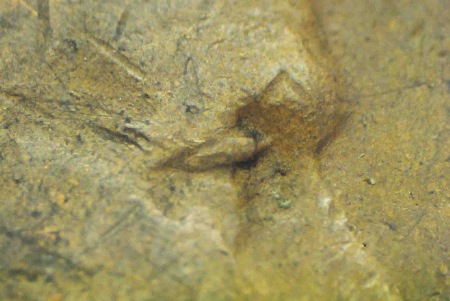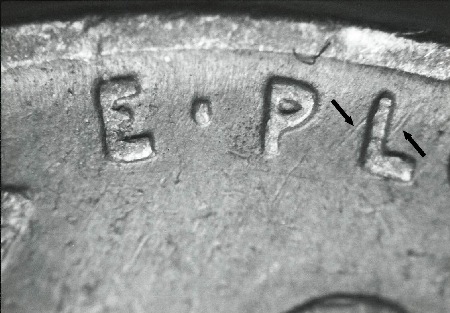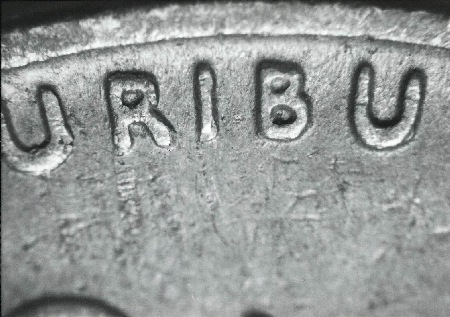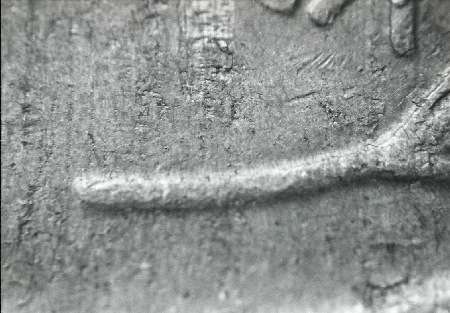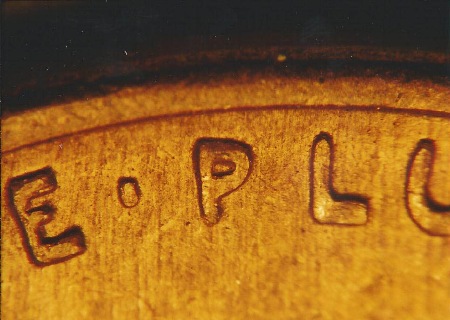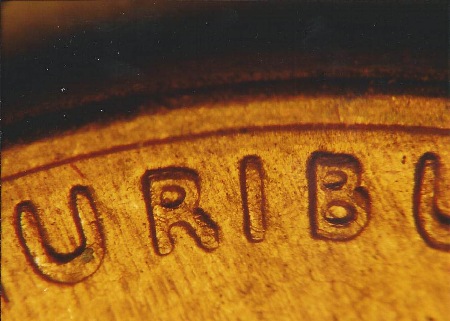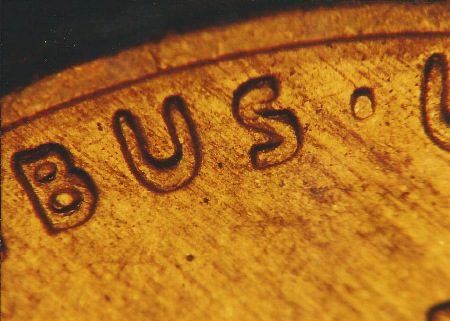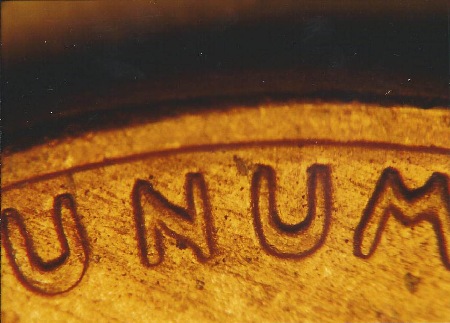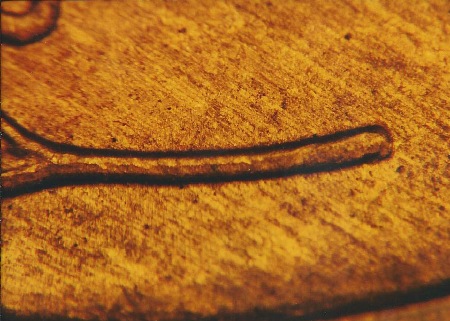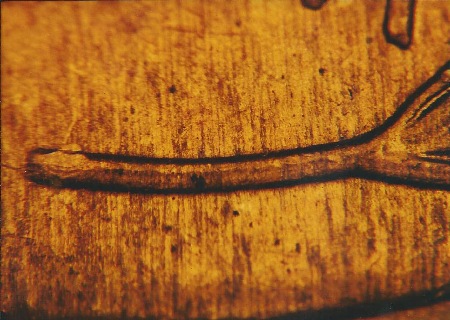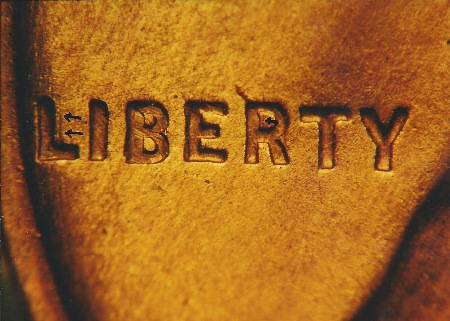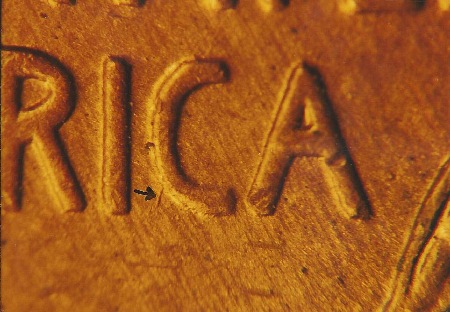


 |
 |
 |
 |
 |
 |
 |
 |
 |
 |
 |
 |
 |
 |
 |
 |
 |
 |
 |
 |
 |
 |
 |
 |
Obverse Varieties 1929 1¢ WDDO-001 Description: Very minor doubling shows as an extra eyelid NE of the normal eyelid. Die Markers: Obverse: The specimen examined was a lower grade coin. No significant markers were detected but higher grade coins may reveal some die markers for the obverse. Reverse: The specimen examined was a lower grade coin. No significant markers were detected but higher grade coins may reveal some die markers for the obverse. Submitted By: Tanner Scott Cross References: None known
1929 1¢ WDDR-001 Description: Class VI extra thickness shows on all letters of EPU, both dots, both wheat ears, and both wheat stems. Die Markers: Obverse: The specimen examined was a lower grade coin. No significant markers were detected but higher grade coins may reveal some die markers for the obverse. Reverse: Two parallel die scratches run from NE to SW through the upper L of PLURIBUS. A higher grade specimen may yield additional die markers. Submitted By: Delma K. Romines Cross References: CONECA: 1-R-VI, Coppercoins: 1929P-1DR-001
1929 1¢ WDDR-002 "Best Of" Variety Description: Very strong Class VI extra thickness shows on all of the letters of EPU, both dots, both wheat ears, both wheat stems, and the top of the letters in ONE. Die Markers: Obverse: A die scratch runs north to south to the right of the vertical bar of the L in LIBERTY. A die scratch runs north to south inside the upper R of LIBERTY. Reverse: A short die gouge runs SSW from the lower left C in AMERICA. Submitted By: Russ LeBeau Cross References: None known Comments: The photos of this variety were taken by John Bordner for the Wexler Doubled Die Files.
| ||


